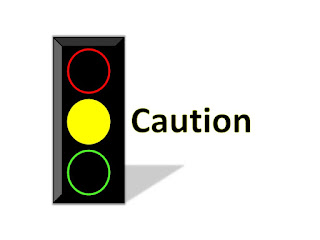Cyanos Acivity September 9, 2020
Reconsider activities and limit exposure to the water.
Disclaimer: The information presented below reflects conditions throughout the lake and may differ from conditions on specific shorelines. For information regarding beach closings please contact the Torrington Area Health District or local town officials.
A 500mL composite sample of the top three meters of water column was collected for
algae counts at the North Bay and Center Lake Sites using a three-meter long sampling tube. Additionally, a concentrated plankton tow sample, was collected at the
Center Lake site using a 10µm mesh net. The concentrated plankton sample was
transferred into a 25mL glass amber bottle, stored at 3°C, and preserved with Lugols
after an examination with microscopy. Other methods of preparing and counting algae cells have been discussed in earlier memos.
Integrated samples were also collected on Friday, September 4th from the North Bay
and Center Lake Sites by James Fischer, Research Director for the White Memorial
Conservation Center. These were collected when in advance of the Labor Day Holiday
Weekend. No other data was collected on September 4
th; however, profile data and
Secchi disk transparency data were collected by Mr. Fischer on September 7
th
.
A 0.5-meter difference was observed between the North Bay and Center Lake Sites on
September 7th with the greater Secchi transparency of 2.02m noted at the North Bay
Site (Fig. 1). The September 7th Center Lake measurement and all Secchi transparency
measurements on September 9
th were between 1.35 and 1.49 meters (Table 1).
Similar to the September 7
th Secchi transparency data, differences were noted between the September 4th Cyanobacteria cell concentrations, which was 14,100 for the North Bay Site, but 64,722 cells/mL at Center Lake Site (Fig. 2). By September 9th
, concentrations at the North Bay and Center Lake Sites were similar at 81,299 and 71,893
cells/mL, respectively. Only the North Bay Site concentration on September 4th was
characteristic of Visual Rank Category 1 conditions; all other concentrations were characteristic of Visual Rank Category 2 conditions (Fig. 2). In the State’s Guidance to Local Health Departments for Blue–Green Algae Blooms in Recreational Freshwaters ( CT
DPH & CT DEEP 2019), the following interventions are recommended for Category 2
conditions in the interest of public health and safety:
- Notify CT DPH, CT DEEP
- Increase regular visual surveillance until conditions change
- Consider cautionary postings at public access points (Examples are provided in the guidance document)
Relative concentration of phycocyanin, which is the signature photosynthetic pigment
of Cyanobacteria, was measured on September 9th in situ with a fluorimeter. Measurements from the top three meters of the water column were averaged for each site and
presented in Fig. 3. On average, the September 9th concentrations were the highest of
the 2020 season.
Bloom-like conditions (Visual Rank Category 3) were observed on September 9
th; low
Secchi transparencies and relatively high phycocyanin concentrations supported thatobservation. Cell concentrations on September 9
th were not >100,000 cells/mL as described for Category 3, but were nonetheless high. Additionally, those concentrations
were for a 3-meter integrated sample. Surface films, which were observable, most
likely had higher cell concentrations.
The Cyanobacteria Dolichospermum spp. comprised 79 and 65% of all cells counted at
the North Bay and Center Lake Sites. Cells of this genus are relatively large which may
explain the relatively higher phycocyanin concentrations. Cyanobacteria collectively
comprised 91 and 95% of all cells counted at the North Bay and Center Lake Sites.
Aphanizomenon spp., Coelosphaerium spp., and Woronichinia spp. were the other genera counted in samples. A total of seven different Cyanobacteria genera were observed in the examination of the plankton net sample or in the samples used for
counts (Table 2). Several, including Aphanizomenon spp., Dolichospermum spp., Microcystis spp., and Woronichinia spp., have been described as having toxigenic properties
(CT DPH & CT DEEP 2019, Cheung et.al. 2013, iNaturalist 2019).
In summary, data and an on-the-water assessment confirmed Cyanobacteria bloom
conditions on September 9
th despite copper sulfate treatments on August 6th and August 24th. Conditions did temporarily improve after the August 24th treatment but deteriorated to pretreatment conditions within approximately two weeks. The water column at all sites was mixed (Table 1), so an influx of internally loaded phosphorus to the
entire water column may have contributed to bloom conditions.
Data is collected and analyzed by Aquatic Ecosystem Research who is contracted by Bantam Lake Protective Association.
Literature Cited
Cheung MY, S Liang, and J Lee. 2013. Toxin-producing Cyanobacteria in Freshwater: A
Review of the Problems, Impact on Drinking Water Safety, and Efforts for Protecting
Public Health. Journal of Microbiology (2013) Vol. 51, No. 1, pp. 1–10. See
http://www.jlakes.org/ch/web/s12275-013-2549-3.pdf
[CT DPH & CT DEEP] Connecticut Department of Public Health and Connecticut Department of Energy and Environmental Protection. 2019. Guidance to Local Health Departments for Blue–Green Algae Blooms in Recreational Freshwaters. See https://portal.ct.gov/-/media/Departments-and-Agencies/DPH/dph/environmental_health/BEACH/BlueGreen-AlgaeBlooms_June2019_FINAL.pdf?la=en
iNaturalist. 2019. Woronichinia. See https://www.inaturalist.org/guide_taxa/700578






